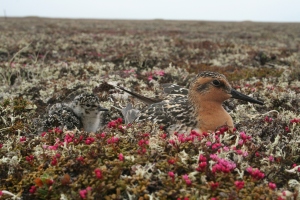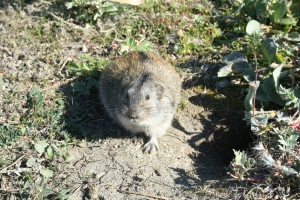Updated: 17/04/2025
The complicated predator-prey interactions are one of the most fascinating fields in ecology. They have been studied for decades, and the more we learn, the more surprising and unpredicted stories that we find. For me, finding that small rodents (lemmings) in the high Arctic may affect the populations of waders on the coast of Australia, New Zealand or South Africa was a real amazement.
Lemming populations have been known to show 3-5 years cycle, driven by either top-down or bottom-up control. In the Early View paper “Loss of periodicity in breeding success of waders links to changes in lemming cycles in Arctic ecosystems”, we have studied the interactions between the breeding success of high-Arctic nesting migratory shorebirds and lemming abundance, as they were suggested to be linked via the ‘alternative prey hypothesis’: In years of low lemming abundance, their predators, mainly Arctic fox, would switch to alternative prey, including chicks and eggs of shorebirds. In light of the large amount of evidence that lemming cycles have now changed and even disappeared in some parts of the Arctic, we found that the breeding success of these migrants used to follow the cycles of lemmings, but these cycles have too started to disappear, suggesting a cascading effect of changes in lemming cycles.
The reason for these changes in lemming cycles is still not entirely known. One possible explanation is that climate change caused alteration of the snow structure which is a crucial hiding and feeding place for lemmings during winter. It might also be the natural tendency of populations in nature to go in and out of cycle. As shorebirds are known to consume considerable amount of benthic invertebrates, these changes in lemming cycle in the high Arctic potentially not only affect shorebird populations in the other side of the worlds, but also have a far-reaching cross-systems consequences on the ecosystem on the southern hemisphere.

Perfectly camouflaged shorebird chick with its ‘not so camouflaged’ parent, on the beautiful high Arctic breeding grounds © Pavel Tomkovich

